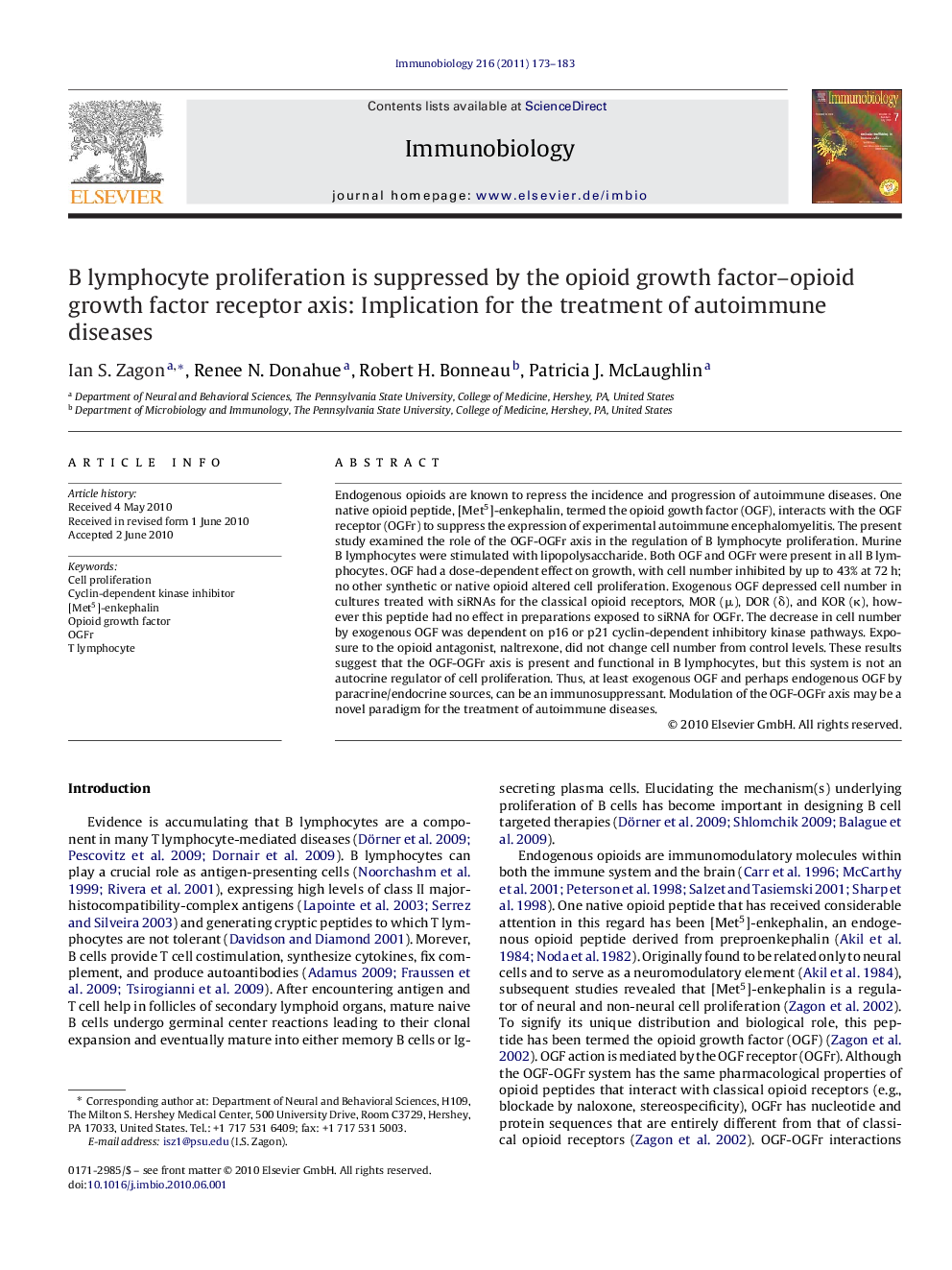| کد مقاله | کد نشریه | سال انتشار | مقاله انگلیسی | نسخه تمام متن |
|---|---|---|---|---|
| 2183559 | 1550297 | 2011 | 11 صفحه PDF | دانلود رایگان |

Endogenous opioids are known to repress the incidence and progression of autoimmune diseases. One native opioid peptide, [Met5]-enkephalin, termed the opioid gowth factor (OGF), interacts with the OGF receptor (OGFr) to suppress the expression of experimental autoimmune encephalomyelitis. The present study examined the role of the OGF-OGFr axis in the regulation of B lymphocyte proliferation. Murine B lymphocytes were stimulated with lipopolysaccharide. Both OGF and OGFr were present in all B lymphocytes. OGF had a dose-dependent effect on growth, with cell number inhibited by up to 43% at 72 h; no other synthetic or native opioid altered cell proliferation. Exogenous OGF depressed cell number in cultures treated with siRNAs for the classical opioid receptors, MOR (μ), DOR (δ), and KOR (κ), however this peptide had no effect in preparations exposed to siRNA for OGFr. The decrease in cell number by exogenous OGF was dependent on p16 or p21 cyclin-dependent inhibitory kinase pathways. Exposure to the opioid antagonist, naltrexone, did not change cell number from control levels. These results suggest that the OGF-OGFr axis is present and functional in B lymphocytes, but this system is not an autocrine regulator of cell proliferation. Thus, at least exogenous OGF and perhaps endogenous OGF by paracrine/endocrine sources, can be an immunosuppressant. Modulation of the OGF-OGFr axis may be a novel paradigm for the treatment of autoimmune diseases.
Journal: Immunobiology - Volume 216, Issues 1–2, January–February 2011, Pages 173–183